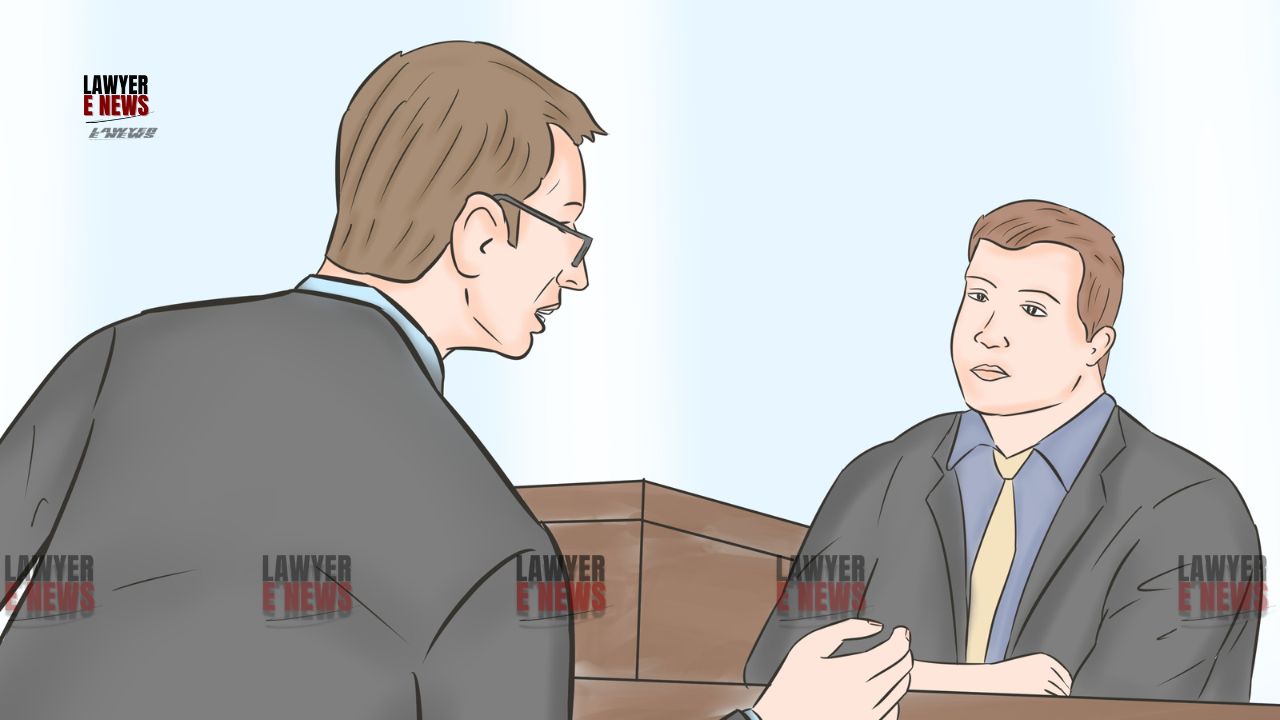


Cross-examination is a critical component of the adversarial legal system, particularly in India, where it serves as a powerful tool for truth discovery. The process allows the defense or opposing counsel to challenge the credibility, reliability, and truthfulness of a witness's testimony. While the art of cross-examination requires skill, strategy, and a deep understanding of the law, its effective use can make the difference between conviction and acquittal, or between a successful and failed civil claim.
This blog delves into the nuances of cross-examination within the Indian legal framework, exploring its statutory basis, purpose, techniques, limitations, and its role in ensuring justice.
Statutory Basis of Cross-Examination
The right to cross-examine witnesses is enshrined in the Indian Evidence Act, 1872. Section 137 of the Act defines cross-examination as the questioning of a witness by the adverse party after the examination-in-chief. Section 138 of the same Act provides for the order of examination, where it is stipulated that cross-examination follows the examination-in-chief, and re-examination follows cross-examination, if necessary.
Additionally, Section 146 of the Indian Evidence Act specifies the types of questions that can be asked during cross-examination, allowing for inquiries into matters that test the witness's credibility, such as questions to reveal any bias, interest, or motive.
Purpose of Cross-Examination
The primary purpose of cross-examination is to test the veracity of the witness's statements made during the examination-in-chief. It serves several functions:
Testing Credibility: The cross-examiner aims to expose inconsistencies, contradictions, or falsehoods in the witness's testimony, thereby diminishing the credibility of the evidence presented.
Revealing Bias: Cross-examination can uncover any biases, interests, or motives that may have influenced the witness's testimony.
Clarifying Ambiguities: If the witness's testimony is unclear or ambiguous, cross-examination provides an opportunity to clarify or elaborate on specific points.
Impeaching the Witness: If a witness is found to have given false testimony, cross-examination can lead to their impeachment, rendering their entire testimony unreliable.
Strengthening the Defense's Case: By discrediting the prosecution's witnesses, the defense can strengthen its case, potentially leading to an acquittal.
Techniques of Cross-Examination
The art of cross-examination requires strategic thinking, quick wit, and an in-depth understanding of the case at hand. Some of the key techniques include:
Leading Questions: Unlike examination-in-chief, where leading questions (those that suggest the answer) are generally not allowed, they are permitted in cross-examination. This allows the cross-examiner to control the narrative and direct the witness's responses.
Control and Pacing: A skilled cross-examiner controls the pace of questioning, ensuring that the witness is not given the opportunity to elaborate unnecessarily. Short, focused questions are often more effective.
Highlighting Inconsistencies: Cross-examiners aim to highlight inconsistencies between the witness's statements during examination-in-chief and their prior statements or evidence, creating doubt about their reliability.
Challenging Credibility: The cross-examiner may challenge the witness's credibility by bringing up past behavior, prior convictions, or other factors that may discredit their testimony.
Use of Documentary Evidence: Cross-examination can involve confronting the witness with documentary evidence that contradicts their oral testimony, thereby undermining their credibility.
Building to a Conclusion: Each question should build toward a larger conclusion that supports the cross-examiner’s theory of the case. The final questions should ideally lead the witness to make admissions that weaken their testimony or the opposing party's case.
Legal and Ethical Boundaries
While cross-examination is a powerful tool, it is not without its legal and ethical boundaries. The Indian courts have consistently emphasized the need for cross-examination to remain within the bounds of propriety and relevance.
Prohibited Questions: Section 148 of the Indian Evidence Act prohibits questions intended to insult or annoy the witness, or those that are not relevant to the case. Furthermore, Section 151 allows the court to forbid questions that are scandalous, intended to insult or annoy, or which appear to be intended to offend the witness's dignity.
Harassment of Witnesses: The Indian judiciary has been vigilant against the harassment of witnesses during cross-examination. The courts can intervene to protect witnesses from abusive or overly aggressive questioning.
Misleading Questions: Questions that are misleading, confusing, or designed to trap the witness into giving an incorrect answer are discouraged. Such tactics can backfire and damage the cross-examiner's credibility in the eyes of the judge or jury.
Relevance: All questions asked during cross-examination must be relevant to the case. Irrelevant questions, even if allowed temporarily, can lead to objections and the striking of the witness’s answers from the record.
Cross-Examination in Criminal Cases
In criminal trials, cross-examination plays a particularly crucial role. The burden of proof rests on the prosecution, and the defense uses cross-examination to challenge the evidence presented against the accused.
Witnesses for the Prosecution: The defense cross-examines prosecution witnesses to find inconsistencies, cast doubt on their testimony, and ultimately weaken the prosecution's case. The credibility of key witnesses, such as the victim in sexual assault cases or eyewitnesses in murder cases, is often the focus of intense scrutiny.
Hostile Witnesses: When a prosecution witness turns hostile, i.e., they retract their earlier statements made during the investigation, the prosecution is allowed to cross-examine their own witness. The aim is to elicit the truth or at least demonstrate that the witness is unreliable.
Accomplice Witnesses: In cases where an accomplice turns approver, their testimony is subject to rigorous cross-examination, as accomplices are often viewed as untrustworthy witnesses whose evidence must be corroborated by other independent evidence.
Cross-Examination in Civil Cases
In civil litigation, the purpose of cross-examination is similar, though the stakes and strategies may differ.
Challenging the Opponent's Case: Cross-examination in civil cases is used to challenge the testimony of the opposing party's witnesses, especially on key points such as liability and damages.
Assessing Credibility: The credibility of witnesses, especially expert witnesses, is often a focal point in civil trials. Cross-examination can expose biases or weaknesses in expert opinions.
Clarification and Rebuttal: Cross-examination provides an opportunity to clarify or rebut points made during the examination-in-chief that may have been unfavorable to the cross-examiner’s case.
Landmark Judgments on Cross-Examination
Indian jurisprudence is replete with landmark judgments that have shaped the law on cross-examination. Some notable cases include:
State of Punjab v. Gurmit Singh (1996): The Supreme Court emphasized that the dignity of a rape victim should be respected during cross-examination and that the defense should avoid questions that are degrading or humiliating.
Rajendra Kumar Sitaram Pande v. Uttam (1999): The Supreme Court held that the evidence of a witness who is not cross-examined should not be automatically discarded, but the court must evaluate whether the absence of cross-examination affects the credibility of the testimony.
Dharma Ram Bhagare v. State of Maharashtra (1973): This case highlighted the importance of giving the accused a fair opportunity to cross-examine witnesses and the impact of denying such an opportunity on the trial's fairness.
Challenges in Cross-Examination
Despite its importance, cross-examination presents several challenges:
Witness Hostility: Witnesses turning hostile is a common problem in Indian courts. Hostile witnesses can disrupt the prosecution's case and complicate the defense's strategy.
Witness Coaching: In some cases, witnesses may be coached to give rehearsed answers, making it difficult for the cross-examiner to expose the truth.
Perjury: Witnesses who commit perjury (deliberately giving false testimony) can mislead the court, making it challenging for the cross-examiner to present an accurate picture of the facts.
Judicial Intervention: While judicial intervention is necessary to prevent harassment of witnesses, excessive intervention can hamper effective cross-examination.
Cross-examination remains one of the most potent tools in the arsenal of a litigator. In the Indian legal system, it serves not only as a means of testing the veracity of witness testimony but also as a critical mechanism for ensuring that justice is done. While it requires a combination of legal knowledge, strategic thinking, and ethical conduct, its successful execution can significantly influence the outcome of a case.
The process of cross-examination, with its blend of art and science, continues to evolve through judicial pronouncements and legislative changes. For practitioners, mastering this skill is essential to effectively represent clients and uphold the integrity of the legal process. As the legal landscape in India grows more complex, the role of cross-examination in the pursuit of justice will remain as vital as ever.